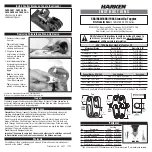
VISION-LITE® / VISION-LITE II®
PROCESSING GUIDELINES
MAY 2022
18
It is the responsibility of the processing plant to define and adjust the quality process control to match
the quality standards acceptable for its own market and in respect of relevant national requirements.
•
Reception:
Control of delivery document of the coated glass supplier. Visual inspection of the packs
(breakages, condensation…);
•
After cutting:
• Visual aspect control (scratches, oxidation/corrosion, splinters etc.);
• Normal control of the cutting quality;
•
After grinding / drilling / washing:
• Visual aspect control (scratches, oxidation/corrosion, splinters etc.);
• Visual control (as to whether the pane is completely dry);
• Check for suction cups or cork pad marks etc…;
• Normal control of the grinding / drilling quality;
•
Prior to toughening (or heat-strengthening):
• Check for glass splinters (if present, remove them by rewashing);
• Check for marks, dirt… If any remove them by gently wiping the coating with a soft cloth and IPA;
•
After toughening (or heat-strengthening):
• Visual aspect control (burns, cracks, scratches, oxidation/corrosion, haze…);
• Optical quality (distortion, bow etc.);
• Visual detection of roller wave;
• Normal control of the toughening quality (break pattern etc.);
•
After heat-soak testing:
• Visual aspect control (scratches, oxidation/corrosion, splinters etc.);
• Check that no damage has been caused by separating blocks;
•
On the insulating glazing unit line:
• Visual aspect control in conformity with the relevant national quality standard for double-glazed
units.
For plants just starting to use coated glass products, a system of “first off” inspection after each process
can be useful until experience is gained. Operator training and experience in identifying faults (which
are often difficult to see, especially before toughening) is important. In any case, a visit from your local
TSM should be organised.
3.13. PROCESSING QUALITY CHECKS
conditions are described in § 3.6.
•
As for other processing steps, no roller blocked should mark the coating face against rollers.
•
Any traces of sealant remaining on the coating after application must be removed immediately
before they harden. They can be cleaned off using a neutral product for windows and soft paper or
a soft cloth, or with a clean rubber scraper.
•
All types of secondary seal can be used (polyurethane, polysulfide, silicone and hot melt). Check
with the sealant supplier that a particular reference has been validated with VISIONLITE® (II).




































